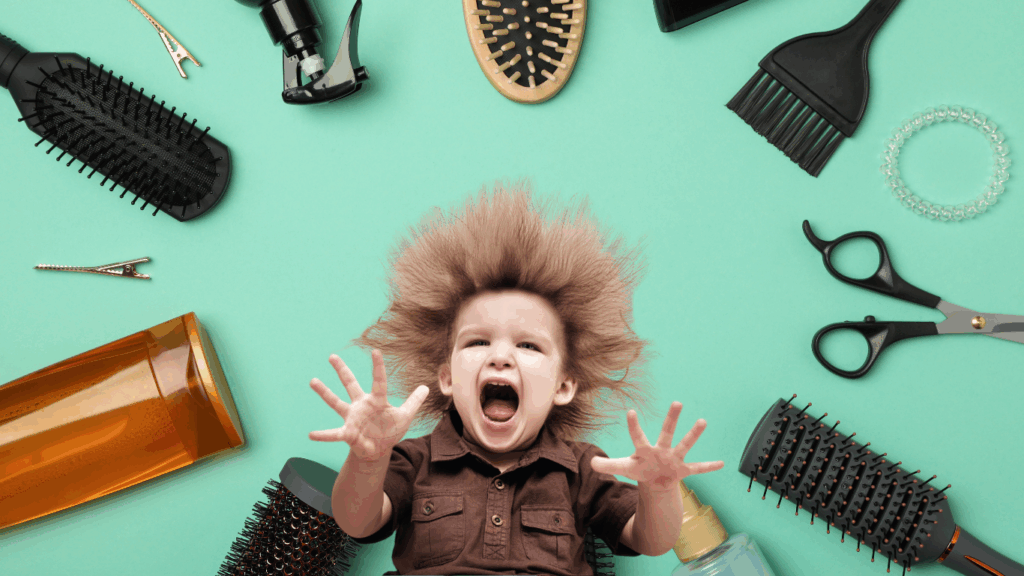Uncombable Hair Syndrome: What It Is and How It Differs from Damaged Hair

If you’ve ever seen a child with light, frizzy hair that seems to stand straight up—no matter how much you brush, condition, or style—you may have witnessed something rarer than just a bad hair day. It’s called uncombable hair syndrome, and although it sounds dramatic, it’s a real and medically recognized condition. But how do you tell the difference between this syndrome and everyday issues like dry, knotty, or damaged hair? Let’s break it down.
What Is Uncombable Hair Syndrome?
Uncombable hair syndrome (UHS) is a rare genetic condition that typically appears in early childhood—usually between ages 3 and 12. The hair of individuals with UHS grows in a distinctive, spiky, frizzy way and stands out from the scalp. It often has a silvery-blond or straw-like appearance and, as the name implies, is extremely difficult (if not impossible) to comb flat.
According to Cleveland Clinic, UHS is caused by mutations in one of three genes: PADI3, TGM3, or TCHH. These genes are responsible for the normal development and shape of hair shafts. In UHS, the hair shafts grow in an irregular, triangular, or heart-shaped pattern under a microscope—causing the hair to stand up and resist flattening or styling.
How Is It Different from Knotty or Damaged Hair?
It’s easy to assume a child just has “difficult” or “messy” hair, but uncombable hair syndrome is biologically different from frizz, dryness, or damage. Here’s how to tell the difference:
- UHS hair has a distinct texture and shape: The hair appears frizzy or wiry all over, even when freshly washed or conditioned.
- Does not improve with products: Unlike dry or damaged hair, UHS hair doesn’t respond to serums, oils, or detanglers.
- Microscopic differences: Under a microscope, UHS hair shafts are triangular or grooved—not cylindrical like typical hair.
- No signs of breakage: UHS hair is not the result of overprocessing, heat damage, or environmental stress. It’s how the hair naturally grows.
On the other hand, common hair damage from heat styling, chemical treatments, or poor nutrition will often appear uneven and brittle, with split ends, breakage, or discoloration. These issues can usually be improved with regular trims and reparative treatments, like deep conditioning or professional smoothing systems.
Is It Permanent?
The good news is that uncombable hair syndrome often improves over time. Many children with UHS experience changes in hair texture as they enter adolescence, and the hair may become more manageable by their teenage years. UHS doesn’t affect overall health or hair growth rate—it’s purely cosmetic.
How to Care for Uncombable Hair
While there’s no cure for uncombable hair syndrome, gentle care can help minimize discomfort:
- Use sulfate-free, moisturizing shampoos and leave-in conditioners.
- Avoid heat styling tools and chemical treatments.
- Use a wide-tooth comb and avoid aggressive brushing.
- Let the child wear their hair naturally—it’s part of what makes them unique!
If you’re unsure whether your child has UHS or simply needs haircare guidance, consult a dermatologist or genetic specialist. A hair shaft analysis under a microscope is often enough to confirm the diagnosis.
Can Adults Have Uncombable Hair Syndrome?
While uncombable hair syndrome most commonly appears in early childhood, there are rare cases where the condition persists into adulthood or is first recognized later in life. In many instances, individuals may have had the condition as children but never received a formal diagnosis—especially if the hair texture improved slightly over time but never fully normalized.
Some adults report that their hair remains frizzy, dry, and unmanageable despite healthy routines and minimal damage. If this sounds familiar and started in childhood, it could be a mild or undiagnosed case of UHS. In these cases, a microscopic hair shaft analysis may still reveal the characteristic triangular or grooved shape seen in the condition.
Genetic studies have also found that UHS can be inherited in an autosomal recessive or dominant pattern. That means parents with mild symptoms or unusual hair texture may unknowingly pass the condition to their children. If you’re an adult experiencing extreme unmanageability or if your child shows signs of UHS, a dermatologist or geneticist can help confirm the diagnosis and rule out other conditions like monilethrix or pili torti.
While there’s still no cure, education and awareness can go a long way—both for children growing up with this rare condition and for adults who’ve learned to embrace their unique hair journey.
Final Thoughts
Uncombable hair syndrome is rare, but very real—and very misunderstood. What may look like unkempt or untamed hair could actually be a genetic condition that requ
